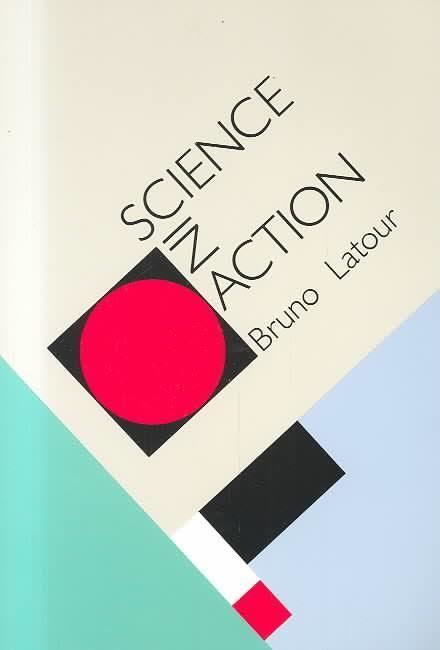8 /10 1 Votes8
Language English Pages 288 Dewey Decimal 306/.45 19 Originally published 1987 Page count 288 OCLC 13820884 | 4/5 Goodreads Publication date 1987 ISBN 0-674-79290-4 LC Class Q175.5 .L38 1987 | |||||||||||||||||||||||||||||||||
 | ||||||||||||||||||||||||||||||||||
Genres Sociology, Mathematics, Philosophy, Science Similar Bruno Latour books, Sociology books, Science books | ||||||||||||||||||||||||||||||||||
Science in Action: How to Follow Scientists and Engineers Through Society (ISBN 0-674-79291-2) is an influential book by Bruno Latour. The English edition was published in 1987 by Harvard University Press. It is written in a textbook style, and contains a full-featured approach to the empirical study of science and technology. Moreover, it also entertains ontological conceptions and theoretical discussions making it a research monograph and not a methodological handbook per se.
In the first chapter Latour develops the methodological dictum that science and technology must be studied "in action", or "in the making". Because scientific discoveries turn esoteric and difficult to understand, it has to be studied where discoveries are made in practice. For example, Latour turns back time in the case of the discovery of the "double helix". Going back in time, deconstructing statements, machines and articles, it is possible to arrive at a point where scientific discovery could have chosen to take many other directions (contingency). Also the concept of "black box" is introduced. A black box is a metaphor borrowed from cybernetics denoting a piece of machinery that "runs by itself". That is, when a series of instructions are too complicated to be repeated all the time, a black box is drawn around it, allowing it to function only by giving it "input" and "output" data. For example, a CPU inside a computer is a black box. Its inner complexity doesn't have to be known; one only needs to use it in his/her daily activities.
Criticism
Latour's work, including Science in Action, has received heavy criticism from some scholars. Olga Amsterdamska's highly critical book review concluded with the following sentence: "Somehow, the ideal of a social science whose only goal is to tell inconsistent, false, and incoherent stories about nothing in particular does not strike me as very appealing or sufficiently ambitious."
